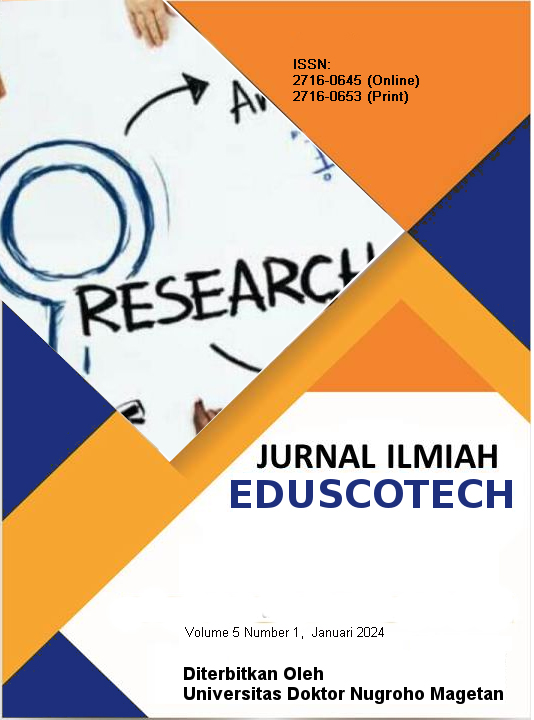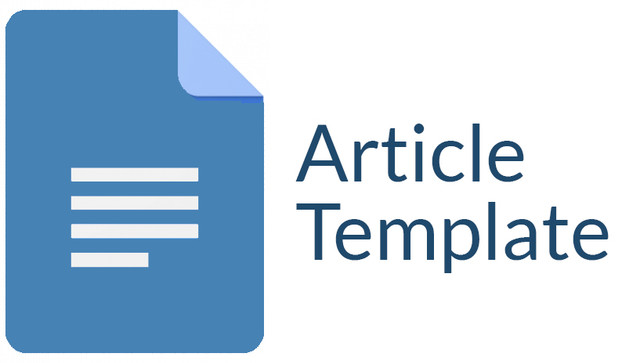Pengaruh Media Pembelajaran Powtoon Terhadap Hasil Belajar IPS Kelas V SDN Unggulan Magetan
Keywords:
Powtoon, Learning Media, Learning Outcomes, Social StudiesAbstract
This study aims to determine the effect of Powtoon learning media on the social studies learning outcomes of fifth-grade students at SDN Unggulan Magetan. The background of the research lies in the low student interest and achievement in social studies, which is still commonly delivered through conventional methods, despite the school having adequate technological facilities. This research employed a quantitative approach using a quasi-experimental design with a nonequivalent control group. The sample consisted of two groups: 34 students in the experimental group who received instruction using Powtoon media, and 37 students in the control group who received conventional instruction. Data were collected through pre-tests and post-tests, and analyzed using the Paired Sample T-Test in SPSS. The results indicated a significant difference between the pre-test and post-test scores in the experimental group (Sig. 0.000 < 0.05), while no significant difference was found in the control group (Sig. 0.152 > 0.05). It can be concluded that the use of Powtoon media has a significant positive impact on students’ social studies learning outcomes. This finding implies that integrating interactive animated media like Powtoon can serve as an innovative alternative in primary school social studies instruction.
Downloads
References
Amin, A., Alimni, A., Kurniawan, D. A., Chen, D., & Wirayuda, R. P. (2022). Servation of Bengkulu Local Wisdom: The Application of Syarafal Anam in Preventing Student Radicalism. International Journal of Instruction, 15(3), 931–948. https://doi.org/10.29333/iji.2022.15350a
Anriyani, S., Yahya, M., & Syarifuddin, S. (2023). The Influence of the Contextual Teaching and Learning Approach on Students Social Sciences Learning Outcomes. JURNAL PENDIDIKAN IPS, 13(2), 184-192. https://doi.org/10.37630/jpi.v13i2.1244
Anwar, K. (2021). Pancasila village, multicultural education and moderation of diversity in Indonesia. Nazhruna: Jurnal Pendidikan Islam, 4(2), 221-234. DOI: https://doi.org/10.31538/nzh.v4i2.1238
Asrial, A., Syahrial, S., Kurniawan, D. A., Subandiyo, M., & Amalina, N. (2019). Exploring obstacles in language learning: Prospective primary school teacher in Indonesia. International Journal of Evaluation and Research in Education (IJERE), 8(2), 249. https://doi.org/10.11591/ijere.v8i2.16700
Ali Anwar. 2009. Statistika Untuk Penelitian Pendidikan Dan Aplikasinya Dengan SPSS Dan Exel. IAIT Press. Kediri.
Banks, J A. 2014. , An Introduction to Multicultural education. (edisi ke lima) USA : Pearson Education.
Brown, C., & Shay, M. (2021). From resilience to wellbeing: Identity‐building as an alternative framework for schools’ role in promoting children’s mental health. Review of Education, 9(2), 599–634. https://doi.org/10.1002/rev3.3264
BNSP. 2006. Kurikulum Tingkat Satuan Pendidikan Mata Pelajaran IPS. Jakarta: Depdiknas.
Firdaus, Y. A., & Putra, G. M. (2023). Pengembangan Media Berbasis Powtoon Model GI untuk Meningkatkan Hasil Belajar IPS Kelas V. Joyful Learning Journal, 12(3), 85–92.
Juniarti, R., Idris, M., & Irawan, D. B. (2023). Pengembangan Media Video Pembelajaran Berbasis Powtoon pada Pembelajaran IPS. Jurnal Pendidikan IPS Indonesia, 7(1), 33–45.
Mayer, R. E. (2001). Multimedia Learning. Cambridge University Press
Marsini, M. (2023). The Effectiveness of the E-Library as a Learning Resource for Elementary School Students' Social Studies in Improving Literacy Skills. AL-ISHLAH: Jurnal Pendidikan, 15(3), 3726-3736.
Marsini, M. (2023). Motivasi Belajar Siswa pada Pembelajaran IPS di SDN Kraton VI Maospati. Jurnal Educatio FKIP UNMA, 9(1), 302-309.
Purwaningsih, L., Hadianti, A., & Marsini, M. (2022). PROTOTYPE DESIGN FLIPBOOK MEDIA IN TEACHING GRAMMAR “SIMPLE PAST TENSE”. Indonesian EFL Journal, 8(2), 287-294.
Sweller, J. (1988). Cognitive Load During Problem Solving: Effects on Learning. Cognitive Science, 12(2), 257–285
Downloads
Published
Issue
Section
License

This work is licensed under a Creative Commons Attribution-ShareAlike 4.0 International License.
Authors who publish with this journal agree to the following terms:
1. Copyright on any article is retained by the author(s).
2. The author grants the journal, right of first publication with the work simultaneously licensed under a Creative Commons Attribution License that allows others to share the work with an acknowledgment of the work’s authorship and initial publication in this journal.
3. Authors are able to enter into separate, additional contractual arrangements for the non-exclusive distribution of the journal’s published version of the work (e.g., post it to an institutional repository or publish it in a book), with an acknowledgment of its initial publication in this journal.
4. Authors are permitted and encouraged to post their work online (e.g., in institutional repositories or on their website) prior to and during the submission process, as it can lead to productive exchanges, as well as earlier and greater citation of published work.
5. The article and any associated published material is distributed under the Creative Commons Attribution-ShareAlike 4.0 International License









